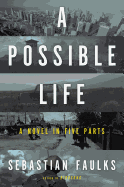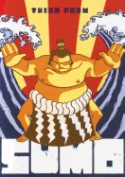By Gabe Habash | Dec 07, 2012 - PW
This week: a British variation on A Heartbreaking Work of Staggering Genius, a moving book on our own extinction, and a book all Cloud Atlas lovers need to read.
 On Extinction: How We Became Estranged from Nature by Melanie Challenger (Counterpoint) –Award-winning poet Challenger travels from a writer’s solitary cabin on the Ding Dong Moor, close by the ruins of a tin mine in Cornwall, England, to a journey to Antarctica with the British Antarctic Survey, back to the North Yorkshire town of Whitby, and on to the tundra of the Arctic where the language and culture of the Inuit barely survive. At every stop in her “peregrination,” she muses on evolutionary changes marked by extinctions past and present. The chief culprit of our “estrangement from nature” in the 20th century is, for her, “the urge to fuse humans and technology.” Throughout this beautifully written, moving, and important book, Challenger yearns to find that feeling of belonging to a particular place. Check out our Q&A with Challenger.
On Extinction: How We Became Estranged from Nature by Melanie Challenger (Counterpoint) –Award-winning poet Challenger travels from a writer’s solitary cabin on the Ding Dong Moor, close by the ruins of a tin mine in Cornwall, England, to a journey to Antarctica with the British Antarctic Survey, back to the North Yorkshire town of Whitby, and on to the tundra of the Arctic where the language and culture of the Inuit barely survive. At every stop in her “peregrination,” she muses on evolutionary changes marked by extinctions past and present. The chief culprit of our “estrangement from nature” in the 20th century is, for her, “the urge to fuse humans and technology.” Throughout this beautifully written, moving, and important book, Challenger yearns to find that feeling of belonging to a particular place. Check out our Q&A with Challenger.A Possible Life by Sebastian Faulks (Holt) - In this masterful book, Faulks links the stories of five disparate lives into a long meditation on the intersection of fate and free will. Five discrete novellas range from 1800s France to Italy in 2029, examining how choices, impulses, and luck (both good and bad) shape lives. What Faulks (Birdsong) risks sound twee and clever, and not unlike what David Mitchell did in Cloud Atlas, but this book transcends pat tropes through the beauty and clarity of Faulks’s prose. Each world is drawn with precision, creating widely varied stories that are intensely absorbing, with language flowing and eddying to suit each one.

Life! Death! Prizes! By Stephen May (Bloomsbury) - In this British variation on A Heartbreaking Work of Staggering Genius, 18-year-old Billy Smith is forced to care for his six-year-old half-brother, Oscar, after their single mother is killed during a botched mugging. It’s his university gap year, and while working part-time, Billy must meet Oscar’s needs and still find time to drink, smoke weed, and play computer games. He must also fight to retain custody of Oscar, despite the objections of his well-meaning aunt, bureaucratic drones, and Oscar’s absent father, who is suddenly back on the scene. Billy’s arch—and sometimes oversophisticated—observations are probably the most enjoyable aspect of the book.
Sumo by Thien Pham (Roaring Brook/First Second) - The dual shattered dreams of a career in the NFL and marriage to his longtime girlfriend spur burly Scott to pack up and leave behind the life he knew, opting instead for total cultural transformation as a professional sumo wrestler in training. After dying his hair black and embarking on the tradition-bound sport’s rigorous physical and mental training, Scott ponders his life and the decisions he’s made, all the while struggling to figure out whether he has what it takes to succeed on his new path. The ambiguous ending is the perfect coda for a piece that so effectively fuses two quite disparate cultures, with its protagonist serving as the symbol for that melding of East and West.







